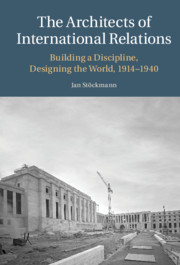Book contents
- The Architects of International Relations
- The Architects of International Relations
- Copyright page
- Dedication
- Contents
- Acknowledgements
- Archival Sources
- Abbreviations
- Introduction
- 1 Wartime Origins
- 2 Genesis of a Discipline
- 3 Peace in the Minds of Men and Women
- 4 Professors as Diplomats
- 5 Testing Collective Security
- 6 The End of World Affairs
- Conclusion
- Index
2 - Genesis of a Discipline
Published online by Cambridge University Press: 24 February 2022
- The Architects of International Relations
- The Architects of International Relations
- Copyright page
- Dedication
- Contents
- Acknowledgements
- Archival Sources
- Abbreviations
- Introduction
- 1 Wartime Origins
- 2 Genesis of a Discipline
- 3 Peace in the Minds of Men and Women
- 4 Professors as Diplomats
- 5 Testing Collective Security
- 6 The End of World Affairs
- Conclusion
- Index
Summary
This chapter draws on archival sources from across Europe and the United States to uncover the motives behind early International Relations (IR) institutions and to contextualise their intellectual output from 1919 until the end of the 1920s. It begins in Aberystwyth and covers the famous IR chairs at the London School of Economics and Oxford as well as Chatham House, the most important British non-university institution in the field. The second section looks at university departments in continental Europe that played important roles during the inter-war period but have since been largely forgotten, including those in Berlin, Hamburg, Paris, Vienna, and Geneva. American universities, the next section shows, adopted IR from a somewhat remote perspective, given the temporary American withdrawal from the international stage. Yet the subject soon flourished on university campuses such as Georgetown, Chicago, Princeton, and Yale as well as among the political and financial establishment in Washington and New York. Finally, the last section presents a few examples of the global spread of IR while acknowledging that the discipline remained heavily Eurocentric throughout the inter-war period.
- Type
- Chapter
- Information
- The Architects of International RelationsBuilding a Discipline, Designing the World, 1914-1940, pp. 72 - 118Publisher: Cambridge University PressPrint publication year: 2022

